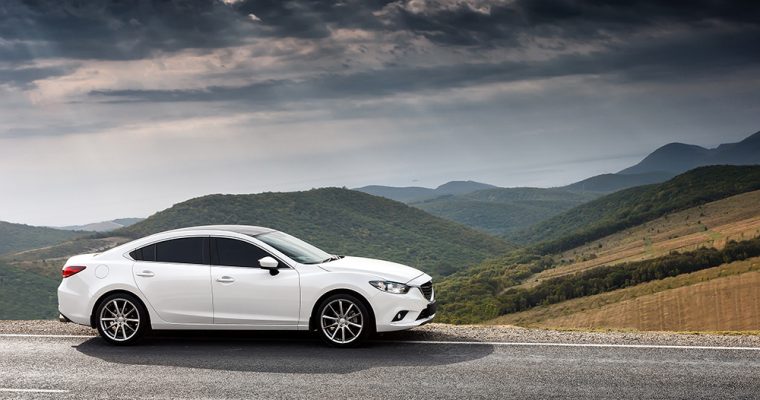
What you need to know about creating and reviewing vehicle policies
For your fleetTop-notch vehicle policies that match the unique circumstances of your business are essential – but getting them right can be a difficult process. What should an organisation’s vehicle use policies look like in the current climate? What is the process of setting them up if you don’t already have something in place? What do you need to know to do it properly? How often should you be reviewing and adopting them?
One way of navigating this challenge is with a fleet leasing partner with experience across a range of industries and vehicle fleets of varying sizes. The right partner will not only save you money but ensure you effectively manage risk, keep your vehicles fit-for-purpose, and provide you with ongoing support to ensure your policies remain up-to-date and evolve with the times.
Roy Waghorn is SG Fleet’s Head of Client Relationships, and Chris Park is Manager of Strategic Fleet Consulting. They have a wealth of experience when it comes to guiding organisations on their vehicle policies, so we asked them to share their insights on getting an organisation’s vehicle policies into shape.
Do you find organisations coming to you needing a thorough overhaul of their workplace vehicle policies, or is it more about looking for gaps?
Chris Park: “We’ve got instances where clients who are new to us and have never developed a policy, and then there are other organisations that have quite a sophisticated, rigorous review process.”
“I’ve generally found clients are quite open to receiving feedback on their policy, if not having us help them write large chunks of it. And some of our larger clients actively say to us, ‘Look, we’ve had this policy, it’s due for review – please give us your comments or feedback’.”
On the mechanics around policy developments and requirements, what elements are involved in creating a vehicle policy?
Chris: “I go into organisations to provide consulting advice, one of which is specifically around policy. And usually, when I’m doing that, I’m looking at how the company’s goals, vision and values align with their policy, because you’ll often have an organisation that has all these high-level objectives and then, when you get down to their policies, it doesn’t support their aims and goals.”
“One of the easiest ones to think about is sustainability. An organisation may have overarching sustainability objectives but, when you look at their fleet policy, it hasn’t translated. Usually, in the construction of any fleet, I’m looking at four different aspects and the interplay of those aspects: safety, cost, sustainability, and branding or image, both internally for your employees and externally for the brand that we all know.”
“Typically, an organisation will have a very strong focus on safety – and rightly so. The second cab off the rank is usually cost, and the better policies will mandate the types of vehicles, fit-for-purpose elements and the job roles within the organisation that get those vehicles.”
“With sustainability, we’re often asking: what does that mean? What are the company’s objectives around sustainability? Is it to put a set number of electric vehicles on the fleet? Is it to reduce CO2 emissions by a certain percentage every year? And how do we make sure those elements find their way into the policy?”
“The last one is branding or image: how do you make sure the vehicle is well-maintained, looks good, and is consistent in its look and feel?”
“So, those are the high-level objectives of how I start by looking at a fleet, and then I translate that into a fleet policy. You have to fill in all of the gaps of other factors like licensing, what to do in the event of an accident and so on, but generally the four categories of safety, cost, sustainability and branding are the elements I’m looking at.”
Roy Waghorn: “To complement that, we provide our customers with a relationship model. Our relationship managers sit with customers, work through their policies, work through their fleet, and make all the recommendations. And a big requirement from our team’s perspective is that we bring the cost-savings to the table.”
Fit-for-purpose is an important element in the composition of any vehicle fleet. So, how does it work into vehicle policy creation?
Chris: “To me, you always start with what is the fit-for-purpose that you’re trying to address, and the key considerations around safety, cost, sustainability and branding. And then you build the fleet policy, or you amend the fleet policy to reflect those things. Fit-for-purpose is how you get to a fleet policy.”
“You may have a customer who’s chosen to drive a Toyota Kluger, for example. And the counterargument is, it’s a great vehicle – yes – it can do the job that you want it to do, but another vehicle that’s fit-for-purpose might be a Toyota RAV4. It’s smaller, it’s got better fuel economy and, from what you’ve told me, it does what it needs to do in terms of the vehicle choice and the fit-for-purpose.
“It all comes down to your corporate strategic objectives – what are you trying to achieve? Let’s go away and build from that.”
Roy Waghorn: “We always go to vehicles that will fit within what a customer is trying to achieve. The customer might come back and say, ‘Okay, these two or three variants are fit-for-purpose’ but, when we run them through our whole-of-life costing model, even though a vehicle may be fit-for-purpose, it might be number three when ranking the cost. And then the business will make that call. As Chris has said, even though vehicle X is the cheapest from a whole-of-life perspective, the best fit-for-purpose for the business is the third ranked vehicle, and that’s the one most businesses should go for.”
Chris: “I’ve definitely had customers who have not chosen the cheapest vehicle, because they expect employee blowback, for example. The employees have an expectation, or they’ve always been driving a certain class of vehicle. And yes, the cheapest vehicle is fit-for-purpose, but it might be a sedan or a hatchback and they’re accustomed to driving a SUV, for instance. Or it might be a European marque, and they like that because there’s prestige around it. It’s not worth the potential issues that you’re going to encounter to give them a different vehicle.”
How do you approach supporting customers with their vehicle policies?
Roy Waghorn: “Customer service is the pure DNA of SG Fleet – client first is our mentality. We do many reviews with our customers – monthly, quarterly, six-monthly reviews – and we also do strategic reviews when required. For
strategic reviews, we work through what we call the Five Pillar Professional Fleet Methodology, and one of those pillars is car policy.”
“There are so many new things that now need to be taken into consideration – such as sustainability, COVID policies, electric vehicles, the journey to lower mission vehicles and so on – so, when it comes to these strategic reviews, it’s important to make sure vehicle policies accommodate these new considerations, as well as what we can see emerging on the horizon.”
“With the combined SG Fleet and LeasePlan business, we have more than 150,000 assets out there with various government departments, and organisations in the private sector. This means we get to see best practice in government, and share that with our corporate clients, and vice-versa. Ultimately, we pass-on an enormous amount of knowledge to our customers about what’s best practice as it directly relates to car policies.”
“It’s accessing those insights that led us to designing strategic reviews that incorporate our Five Pillar concept. We get a lot of value and a lot of great feedback from our customers.”
In conclusion
Whether starting from scratch or merely taking the temperature of your existing policies, having vehicle policies that work for you is far from a cookie-cutter, set-and-forget measure. There are many elements that need to be considered and adjusted depending on your business and the business/economic climate in which you exist.
A quality leasing partner with the capacity and expertise to listen, understand and work with you could be the answer to developing frameworks that will not only save your company money but also help you manage risk and provide valuable support when needed.
Want to talk more about vehicle policies? talk to SG Fleet today.
 Driving Insights
Driving Insights



